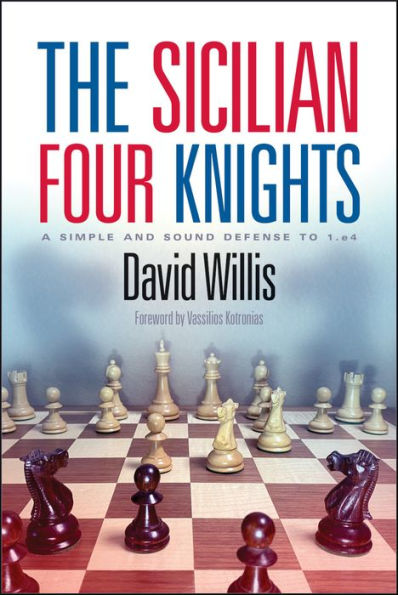A Straightforward and Solid Way to Meet 1.e4 With all the many books and articles on the Sicilian Defense, there is surprisingly little about the Four Knights Variation. Its starting position is reached after 1.e4 c5 2.Nf3 e6 3.d4 cxd4 4.Nxd4 Nf6 5.Nc3 Nc6. It may also be reached after 1.e4 c5 2.Nf3 Nc6 3.d4 cxd4 4.Nxd4 Nf6 5.Nc3 e6. Some prefer 2...e6 to 2...Nc6 because it avoids 3.Bb5. The fundamentals of the Sicilian Four Knights are not hard to learn. Black reaches the middlegame quickly and safely, with lively piece play in the dynamic positions which arise. There is no easy ride for White here, and, in particular, if he gets over-ambitious, he can find himself on the receiving end of a powerful attack very quickly. The material is very well structured, and the assessments are objective and backed with accurate analysis which will not cause the reader fatigue by becoming exceedingly elaborate … But, above all, this is an opening that is definitely sound and this work proves it. It will improve your ability to score against both weaker and stronger opposition, offering clear-cut and occasionally bold play. Author David Willis has done a fine job of clearly presenting the analysis, providing us with comprehensive explanations and sound lines in an opening that deserves more attention and popularity. I can wholeheartedly recommend the Four Knights to all levels of players. – From the Foreword by Vassilios Kotronias About the Author Correspondence senior master David Willis is one of the strongest American correspondence chessplayers. He is also a master in over-the-board play and has been relying on the Sicilian Four Knights as his go-to defense against 1.e4 for years. He lives with his family in San Diego. This is his first book for Russell Enterprises.
1139520095
The Sicilian Four Knights: A Simple and Sound Defense to 1.e4
A Straightforward and Solid Way to Meet 1.e4 With all the many books and articles on the Sicilian Defense, there is surprisingly little about the Four Knights Variation. Its starting position is reached after 1.e4 c5 2.Nf3 e6 3.d4 cxd4 4.Nxd4 Nf6 5.Nc3 Nc6. It may also be reached after 1.e4 c5 2.Nf3 Nc6 3.d4 cxd4 4.Nxd4 Nf6 5.Nc3 e6. Some prefer 2...e6 to 2...Nc6 because it avoids 3.Bb5. The fundamentals of the Sicilian Four Knights are not hard to learn. Black reaches the middlegame quickly and safely, with lively piece play in the dynamic positions which arise. There is no easy ride for White here, and, in particular, if he gets over-ambitious, he can find himself on the receiving end of a powerful attack very quickly. The material is very well structured, and the assessments are objective and backed with accurate analysis which will not cause the reader fatigue by becoming exceedingly elaborate … But, above all, this is an opening that is definitely sound and this work proves it. It will improve your ability to score against both weaker and stronger opposition, offering clear-cut and occasionally bold play. Author David Willis has done a fine job of clearly presenting the analysis, providing us with comprehensive explanations and sound lines in an opening that deserves more attention and popularity. I can wholeheartedly recommend the Four Knights to all levels of players. – From the Foreword by Vassilios Kotronias About the Author Correspondence senior master David Willis is one of the strongest American correspondence chessplayers. He is also a master in over-the-board play and has been relying on the Sicilian Four Knights as his go-to defense against 1.e4 for years. He lives with his family in San Diego. This is his first book for Russell Enterprises.
18.99
In Stock
5
1

The Sicilian Four Knights: A Simple and Sound Defense to 1.e4

The Sicilian Four Knights: A Simple and Sound Defense to 1.e4
eBook
$18.99
$24.95
Save 24%
Current price is $18.99, Original price is $24.95. You Save 24%.
Related collections and offers
18.99
In Stock

Product Details
| ISBN-13: | 9781949859379 |
|---|---|
| Publisher: | Russell Enterprises, Incorporated |
| Publication date: | 07/19/2021 |
| Sold by: | Barnes & Noble |
| Format: | eBook |
| File size: | 12 MB |
| Note: | This product may take a few minutes to download. |
About the Author
From the B&N Reads Blog
